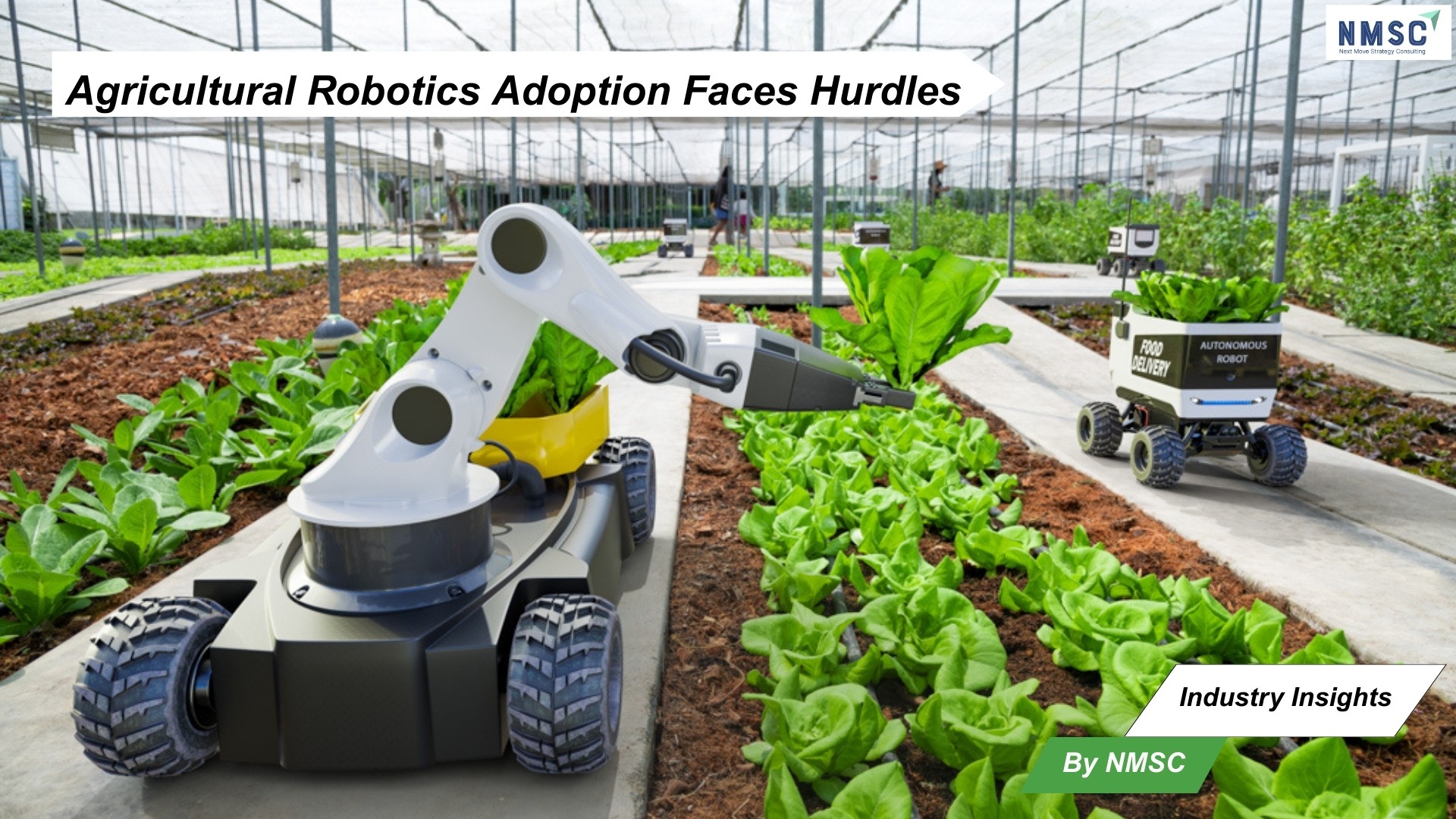Agricultural Robotics Adoption Faces Hurdles
Published: 2025-09-15

Industry Insights from Next Move Strategy Consulting
As precision farming evolves, unmanned agricultural robots (UARs) are emerging as powerful tools to complement traditional machinery. A recent study from Romania highlights how these miniaturized systems, capable of targeted spraying, weed control, crop monitoring, and early disease detection, could reshape farming competitiveness. Rather than replacing heavy equipment, they address critical gaps in labor, efficiency, and sustainability.
Growing Momentum in Emerging Markets
Survey responses from 130 participants — including farmers, investors, and service providers — reveal that nearly half are already integrating some form of precision agriculture tools. Farmers see robotics as a means to optimize resource use, reduce costs, and sustain yields, while investors view them as a pathway to resilient operations equipped to withstand climate pressures and labor shortages.
Romania’s agricultural ecosystem is particularly well-positioned for this transition, with strong knowledge management and dynamic capabilities. Farmers and entrepreneurs demonstrate adaptability, intellectual resource protection, and openness to learning, creating fertile ground for scaling robotics once affordability improves.
Next Move Strategy Consulting's View on the Agricultural Robotics Market Impact
According to Next Move Strategy Consulting viewpoint, the agricultural robotics market is a disruptive force shifting farming from a labor-intensive practice to a capital-intensive, data-driven industry. Its impact creates a new competitive landscape where success hinges on innovative service-based models like Robotics-as-a-Service (RaaS) and strategic partnerships, rather than mere hardware sales. This transition promises enhanced resilience and precision for farms but also presents a critical affordability chasm, particularly in emerging markets. The key to unlocking large-scale adoption and market dominance will be solving this financing puzzle through cooperative models and tailored leasing options, making advanced technology accessible beyond large agribusinesses.
Barriers to Large-Scale Adoption
Despite clear benefits, financial constraints remain the most pressing challenge. High equipment costs deter small and medium-scale farmers, especially in markets with thin margins. Without leasing models, subsidies, or cooperative financing, broad adoption is unlikely.
Infrastructure gaps add further limitations. Weak digital connectivity and limited access to advanced training in rural regions reduce the effectiveness of robotic integration with precision data systems.
Pathways to Accelerated Adoption
Integrating robotics into existing knowledge management systems will be critical to sustaining adoption. By creating feedback loops for continuous learning, farmers can embed robotics into daily practice rather than treating them as one-off tools.
Source: Devdiscourse
Prepared by: Next Move Strategy Consulting
About the Author
 Pritish Braman is a Digital Marketing Executive with over a year of experience, specializing in content writing and online engagement. He enjoys creating clear, impactful content that connects with readers while also applying marketing strategies to reach wider audiences.
Pritish Braman is a Digital Marketing Executive with over a year of experience, specializing in content writing and online engagement. He enjoys creating clear, impactful content that connects with readers while also applying marketing strategies to reach wider audiences.
About the Reviewer
 Debashree Dey is a skilled Content Writer, PR Specialist, and Assistant Manager with strong expertise in Digital Marketing. She specializes in crafting visibility strategies and delivering impactful, data-driven campaigns. Passionate about creating engaging, audience-focused content, she helps brands strengthen their online presence. Beyond work, she draws inspiration from creative projects and design pursuits.
Debashree Dey is a skilled Content Writer, PR Specialist, and Assistant Manager with strong expertise in Digital Marketing. She specializes in crafting visibility strategies and delivering impactful, data-driven campaigns. Passionate about creating engaging, audience-focused content, she helps brands strengthen their online presence. Beyond work, she draws inspiration from creative projects and design pursuits.
















Add Comment